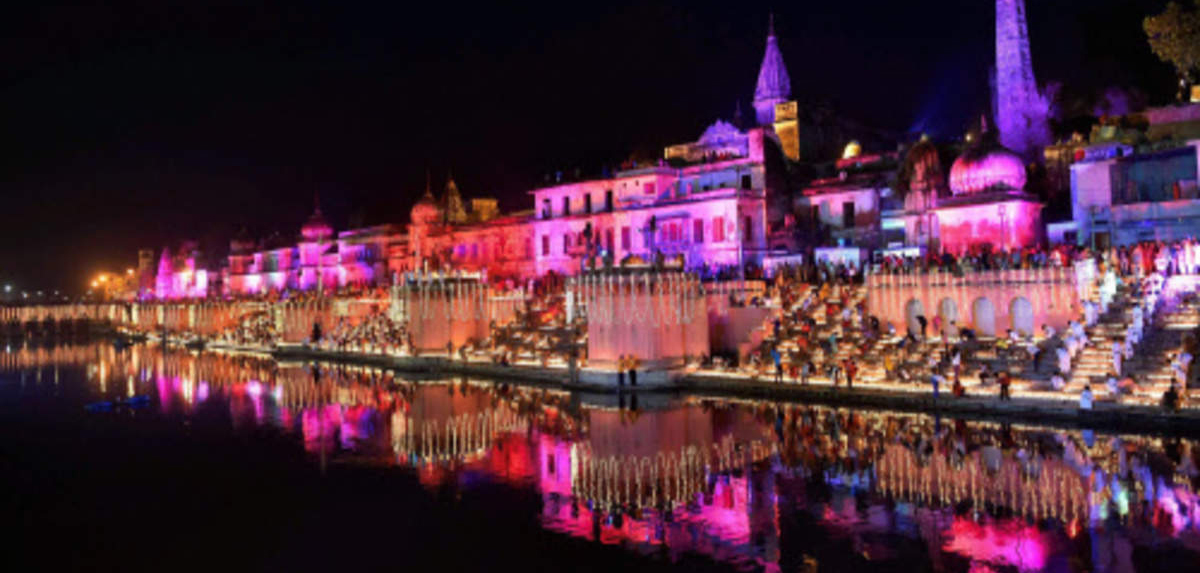
Ayodhya, the birthplace of Lord Rama and is believed to be one of the seven most sacred places in India. Situated on the banks of Saryu, some 135 km east of Lucknow, Ayodhya was called Saket in ancient times. Ayodhya finds mention in several legends and stories including the epic Ramayana.
India’s biggest festival, Diwali, can be traced back to Ayodhya when the entire city glittered with clay lamps to welcome the victorious Rama who returned home after slaying Ravana. The Atharva Veda has described Ayodhya as a ‘city built by Gods and being prosperous like paradise itself’. Hindusim isn’t the only religion that prospered here; Jainism, Buddhism and Islam did too and their influences can be seen around the town. Ayodhya is also the birthplace of five Jain Tirthankars including Adinath.

Situated between the rivers Varuna and Assi as they join the Ganges, Varanasi takes its name from its location. It is often referred to as the oldest living city in the world. It is also known as Kashi, the city of light, but the British, in an endeavor to simplify matters, had coined their own name for the place- Benaras. Varanasi is the city of a thousand temples. Its Prominence in Hindu mythology is virtually unrivalled.
According to Hindu belief, Varanasi is the cosmic centre of the Universe. The renowned American novelist Mark Twain once wrote "Benaras is older than history, older than tradition, older even than legend and looks twice as old as all of them put together."

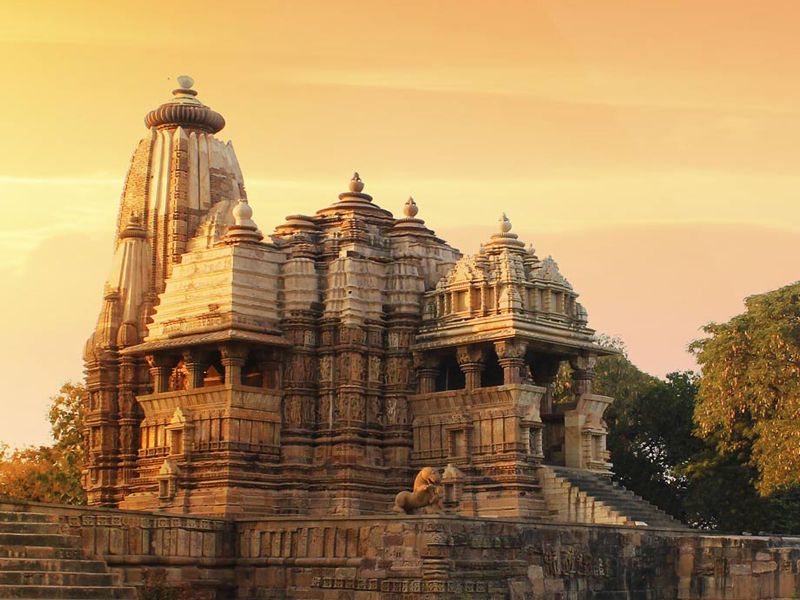
The name Khajuraho, ancient "Kharjuravāhaka", is derived from the Sanskrit words kharjura = date palm and vāhaka = "one who carries".
The Khajuraho Group of Monuments has been listed as a UNESCO World Heritage Site, and is considered to be one of the "seven wonders" of India.
The Temple town of Khajuraho is much different from any other temple city of India. It is not about religion and worshipping and deities. The temples of Khajuraho are instead famous for the eroticism etched on its walls in the form of sculptures. These temples were built by the rulers of the Chandela dynasty over a span of 200 years, from 950 to 1150. There were originally over 80 Hindu temples, of which only 25 now stand in a reasonable state of preservation, scattered over an area of about 20 square kilometres (8 sq mi). Today, the temples serve as fine examples of Indian architectural styles that have gained popularity due to their explicit depiction of sexual life during medieval times.
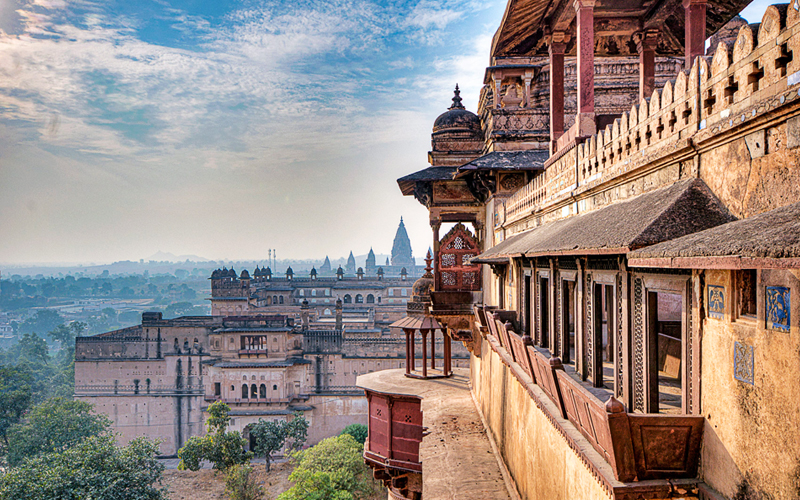
Today a sleepy little hamlet, it was once the capital city of the mighty Bundelkhand Empire.
Orchha was founded in 1501 AD,[2] by the Bundela chief, Rudra Pratap Singh, who became the first King of Orchha, (r. 1501-1531) and also built the Fort of Orchha. Although Orchha was never really a very affluent place, that did not deter the fiercely proud Bundelas from undertaking ambitious projects.
Numerous cenotaphs or chhatris dot the vicinity of the fort. Elsewhere about the town there is an unusual variety of temples and tombs, the richness of its palaces, temples and cenotaphs is reflected in the gently flowing water of the Betwa River.


The name stands for Dwar of Hari or Gateway to God, 'Hari' meaning God and 'dwar' meaning gate.
The River Ganges, after flowing for 253 kilometres (157 mi) from its source at Gurumukhi at the edge of the Gangotri Glacier, enters the Indo-Gangetic Plains of North India for the first time at Haridwar.
Haridwar is regarded as one of the seven holiest places to Hindus. According to Hindu mythology, Haridwar is one among the four sites where drops of the elixir of immortality, Amrita, accidentally spilled over from the pitcher, in which it was being carried away by the celestial bird Garuda, after the Samudra manthan. The spot where the nectar fell is considered to be the Brahma Kund at Har-ki-Pauri (literally, "footsteps of the Lord," and symbolically the footprints of the Amrita), the most sacred ghat of Haridwar; thousands of devotees and pilgrims flock here during festivals or snan (Holy Bath) from all over India to take a holy dip. This act is considered to be the equivalent of washing away one's sins to attain Moksha (Salvation).
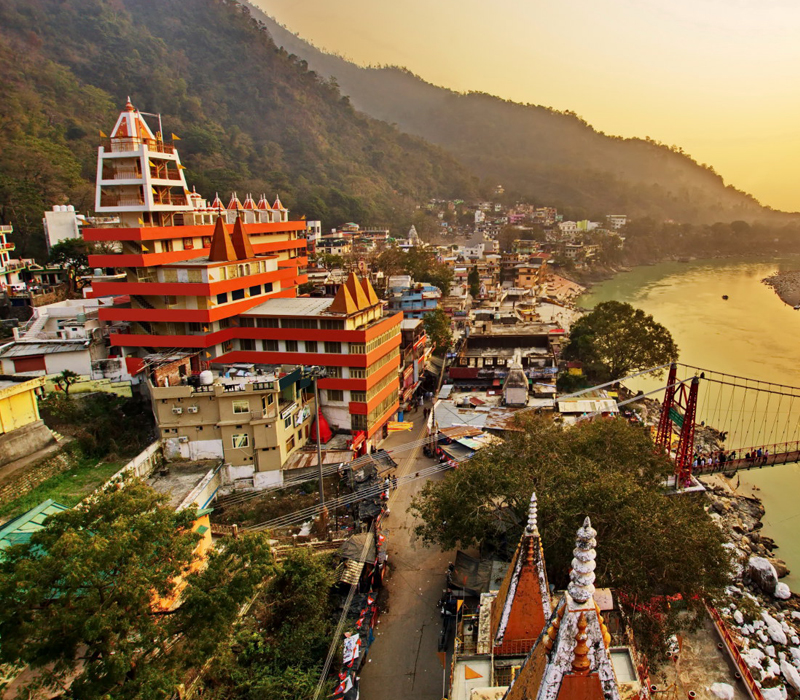
RISHIKESH - is a name of Vishnu that means 'lord of the senses'. The root words Rishik and ish join together to make Rishikesh. Hrishik means Senses and ish means master or Lord. Hence the word means Lord of Senses or Lord Vishnu.
It is a holy city for Hindus and a famous centre of pilgrimage. It is also known as the gateway to the Himalayas and is the starting point for traveling to the sites that form the Char Dham pilgrimage — Badrinath, Kedarnath, Gangotri, and Yamunotri. The sacred river Ganga flows through Rishikesh. In fact, it is here that the river leaves the Shivalik mountains, and flows out into the plains of northern India.
Several temples, ancient as well as new, can be found along the banks of the Ganges in Rishikesh. It is sometimes nicknamed "the world-capital of Yoga", as it has numerous yoga centres. It is believed that meditation in Rishikesh brings one closer to attainment of moksha.

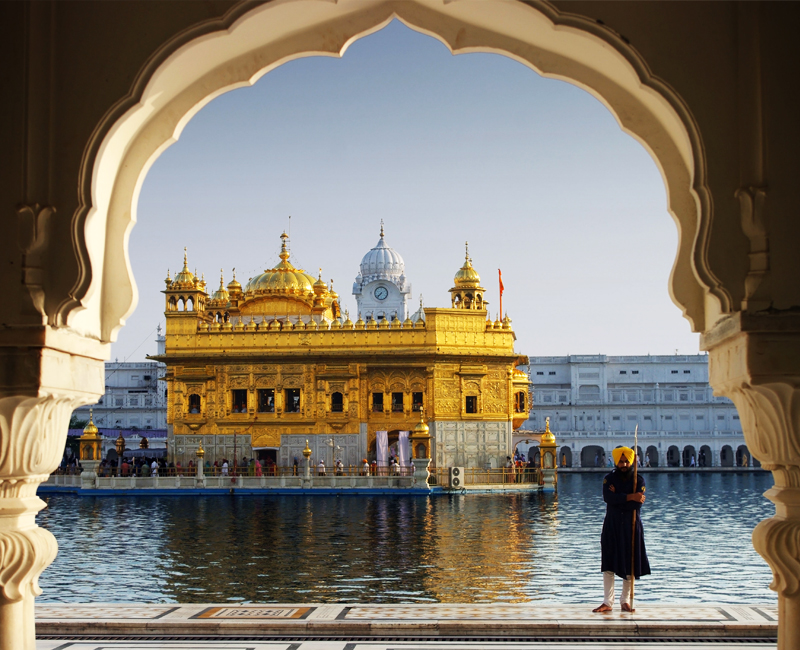
In Hindi the word Amritsar means 'a Holy pool of nectar' and it was back in the year 1573 that work for digging the Holy pool began.
Located in the North West region of India, Amritsar lies about 15 miles (25 km) east of the border with Pakistan.
The most striking feature about Amritsar is its antiquity. Its central walled city has narrow streets mostly developed in the 17th and 18th century. The city is a peculiar example of an introverted planning system with unique areas called Katras. The Katras are self styled residential units that provided unique defence system during attacks on the city. Amritsar is the main seat of Sikh history and culture. The city itself was founded by the Sikh Guru, Guru Ram Das, and till present times it is the spiritual and temporal center of Sikh culture with the Golden Temple in Amritsar as its nucleus.
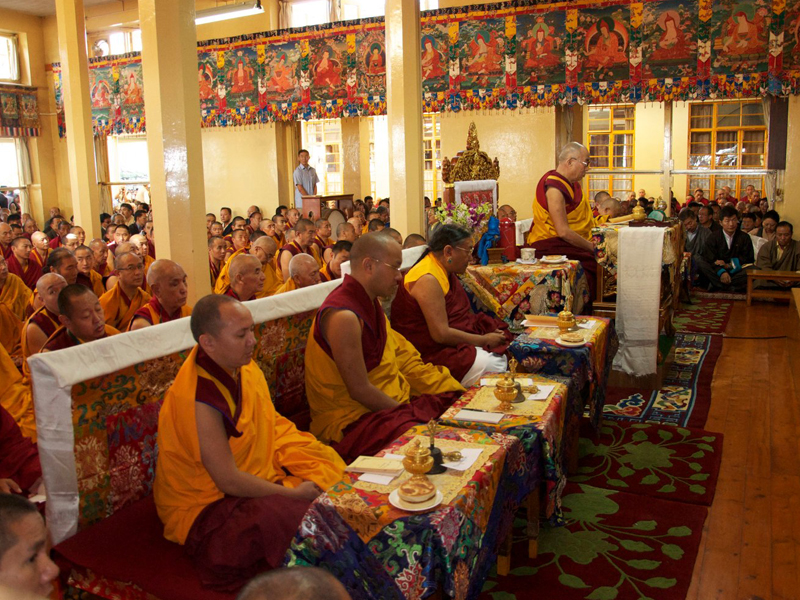
It is a Hindi word and an approximate translation into English would be 'spiritual dwelling' or, more loosely, 'sanctuary'.
The hill station sits on a narrow ridgeline along the Dhauladhar range. Surrounded by pine forests, the grand Dhauladhar ranges tower like sheets of rock over Dharamshala, making this a great place for the adventure lover. Dharamshala town is roughly divided into two sections – the lower town with its traditional settlement and market areas and the upper town of McLeodganj, famous for its celebrity resident, His Holiness the Dalai Lama.
Founded by the British between 1815 and 1847, Dharamshala remained a low-profile hill town till the influx of Tibetan refugees along with the Dalai Lama. The influx of Tibetan refugees after Chinese occupation in 1959 changed all that. The Dalai Lama set up his temporary residence at McLeodganj, the upper town and has continued to stay here.

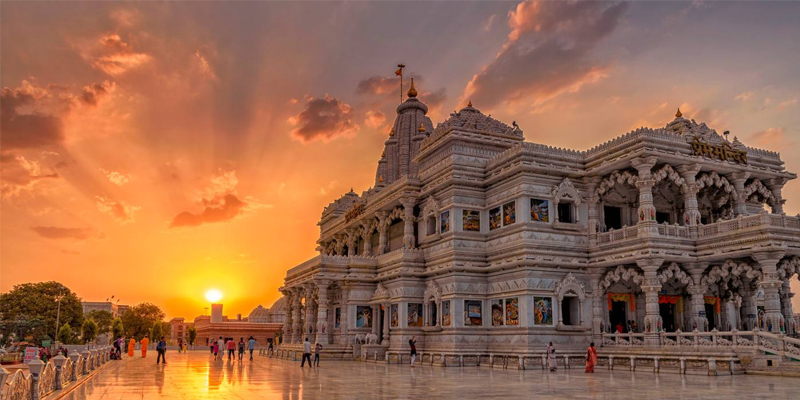
Mathura the birthplace of Lord Krishna is an imporMathura the birthplace of Lord Krishna is an important place of pilgrimage and thousands of devotees throng the city throughout the year. It lies at the heart of the Brajbhoomi, a land that is imbued with sanctity, for it was here that the young Krishna was nurtured. The little towns and hamlets in this area are still alive with the tales of his mischievous pranks; his extraordinary exploits still seem to echo with the sound of his flute.
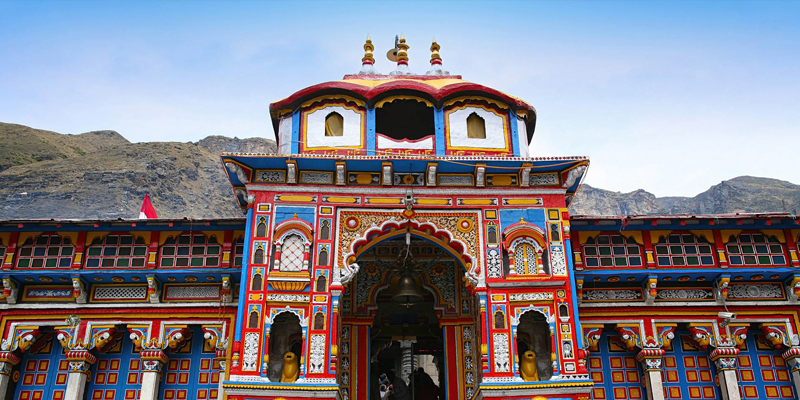
Badrinath Dham, one of the oldest and most revered places of Hindus, is situated along the river Alaknanda in Uttarakhand state of India at an altitude of 3133 m above sea level. Famous by the name of Vishal Badri (the biggest among five Badris), the temple and town are one of the four Char Dham pilgrimage sites. Dedicated to God Vishnu, the shrine is considered to be one of eight 'swayam vyakta' or self-manifested statues of God Vishnu; the image of Lord Vishnu is postured in meditative mood (the ‘padmasan’).

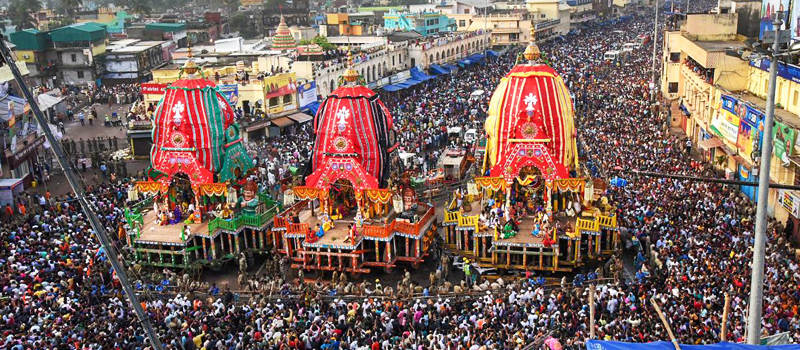
Puri is considered to be an abode of Lord Jagannath (The Lord of Universe). It is considered to be one of the four cardinal institutions or “Dhams”. Being positioned on the coast of the Bay of Bengal, the town of Puri is blessed with some of the most gorgeous sun-kissed beaches in India.
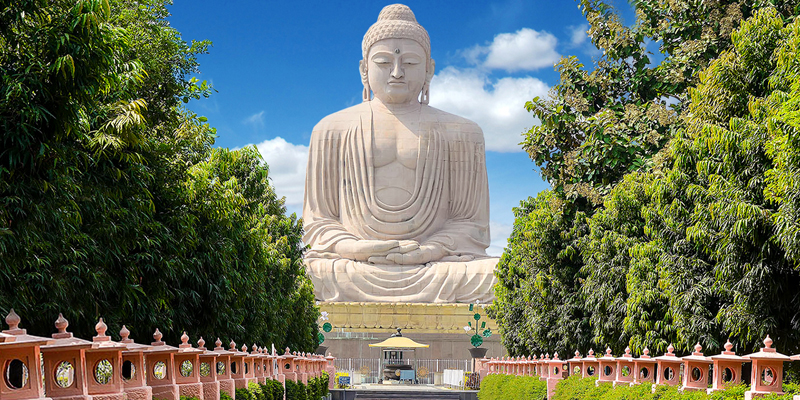
"Bodh Gaya is the place where Gautama Buddha attained unsurpassed, supreme Enlightenment. It is a place which should be visited or seen by a person of devotion and which would cause awareness and apprehension of the nature of impermanence"

Location: 207, 2nd Floor, Business Centre, 1-C, Madhuban, Udaipur, Rajasthan, India
M: +91 98280 57069
M: +91 98916 29176
T: +91 294 - 2526477
E: info@atulyamtours.com
E: bookings@atulyamtours.com
A journey of Lifetime
Bhutan Program Extensive
Central India Wild Life with Culture Program
Colors of Rajasthan
Coromandal to Malabar - Signature Sojourns
Gujarat Program with Prices
Exotic Kerala
Golden Triangle with Sherkhan
Gujarat - Rajasthan Wildlife Tour
Highlights of Nepal
India - Tiger Marathon
India For Honeymooners
Leopards & Tigers of India
The Great Himalayan Safari
The Ultimate Indian Indulgence
Cuisine of Udaipur
Explore Udaipur in a Customized Designer Auto
Mewar Village Tour
Spiritual Udaipur
Udaipur - Kumbhalgarh Program
Udaipur By Cycle
Udaipur Heritage Walk
